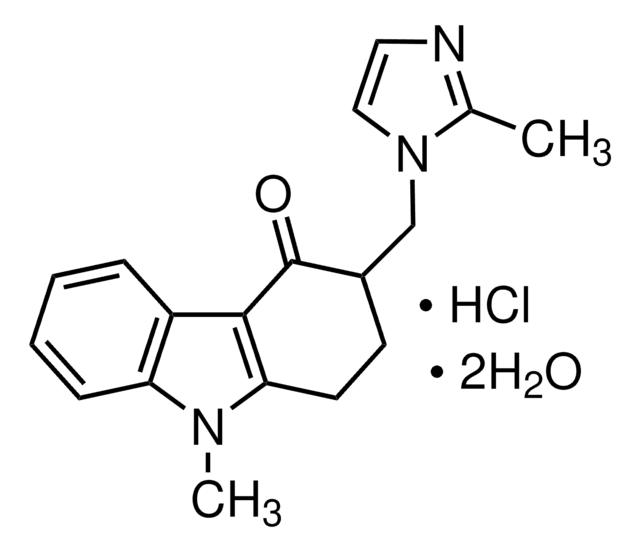P-044
Promethazine hydrochloride
vial of 25 mg, certified reference material, Cerilliant®
Synonym(s):
10-[2-(Dimethylamino)propyl]phenothiazine hydrochloride
About This Item
Recommended Products
grade
certified reference material
form
solid
feature
Snap-N-Spike®/Snap-N-Shoot®
packaging
vial of 25 mg
manufacturer/tradename
Cerilliant®
technique(s)
gas chromatography (GC): suitable
liquid chromatography (LC): suitable
application(s)
forensics and toxicology
pharmaceutical (small molecule)
format
neat
storage temp.
room temp
SMILES string
Cl[H].CC(CN1c2ccccc2Sc3ccccc13)N(C)C
InChI
1S/C17H20N2S.ClH/c1-13(18(2)3)12-19-14-8-4-6-10-16(14)20-17-11-7-5-9-15(17)19;/h4-11,13H,12H2,1-3H3;1H
InChI key
XXPDBLUZJRXNNZ-UHFFFAOYSA-N
Gene Information
human ... HRH1(3269)
Looking for similar products? Visit Product Comparison Guide
General description
Legal Information
Signal Word
Danger
Hazard Statements
Precautionary Statements
Hazard Classifications
Acute Tox. 4 Oral - Aquatic Chronic 2 - Eye Dam. 1 - Skin Sens. 1
Storage Class Code
11 - Combustible Solids
WGK
WGK 1
Flash Point(F)
Not applicable
Flash Point(C)
Not applicable
Certificates of Analysis (COA)
Search for Certificates of Analysis (COA) by entering the products Lot/Batch Number. Lot and Batch Numbers can be found on a product’s label following the words ‘Lot’ or ‘Batch’.
Already Own This Product?
Find documentation for the products that you have recently purchased in the Document Library.
Our team of scientists has experience in all areas of research including Life Science, Material Science, Chemical Synthesis, Chromatography, Analytical and many others.
Contact Technical Service










